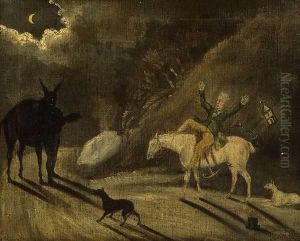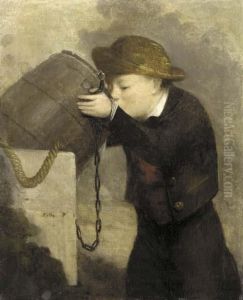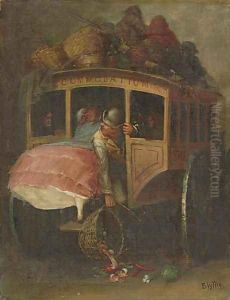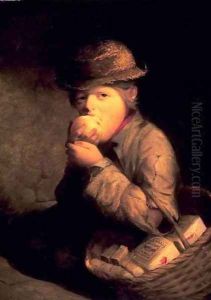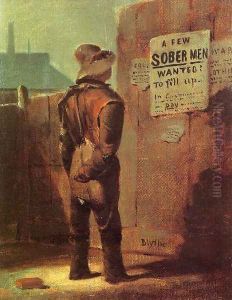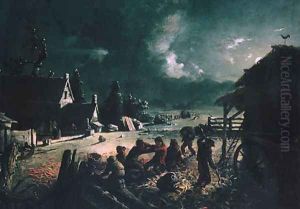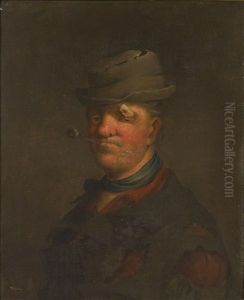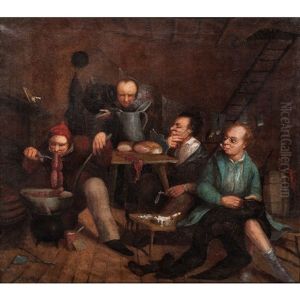David Gilmour Blythe Paintings
David Gilmour Blythe was an American painter associated with the style of genre painting, which depicts scenes from everyday life. Born on May 9, 1815, in East Liverpool, Ohio, Blythe began his career as a painter relatively late in life. He was primarily self-taught, although he did spend a brief period studying under a portrait painter in Pittsburgh, Pennsylvania.
Blythe's work reflected his keen observation of society and often carried a satirical edge, commenting on the politics, social issues, and human follies of his time. He became known for his darkly humorous and sometimes macabre paintings that provided a critical look at the events leading up to and during the American Civil War. His canvases frequently contained allegorical and symbolic elements, and he was adept at capturing the essence of the human condition in his depictions of everyday scenes.
Although Blythe lived and worked in Pittsburgh for most of his career, his work was not confined to this region. He traveled to various parts of the United States, observing and painting the life and people he encountered. His paintings serve as valuable historical documents of the period, capturing the tumultuous atmosphere of America in the mid-19th century.
Blythe's life, much like his art, was not devoid of hardship. He faced personal and financial struggles and was known to live a bohemian lifestyle. He never achieved great wealth or fame during his lifetime, and it was only after his death that his work began to be appreciated by a wider audience. David Gilmour Blythe died on November 15, 1865, in Pittsburgh, Pennsylvania. Today, his works are recognized for their unique contribution to American art and are held in various museum collections, including the Metropolitan Museum of Art and the Smithsonian American Art Museum.




